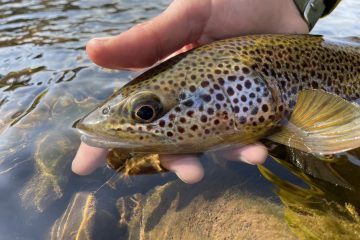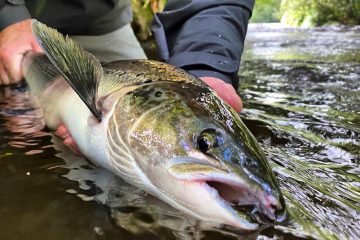If you are heading to the Taw and some fishing it is worth noting the byelaws for fishing the river.
| Seasons | ||
| Salmon | 1 March to 30 September | |
| Sea Trout | 15 March to 30 September | |
| Brown Trout | 15 March to 30 September |
| Methods | |
| Fly fishing permitted all season | |
| Spinning permitted until 31 March | |
| No other method or bait fishing permitted |
| Limits | ||
| Salmon | No salmon to be retained before 16th June | |
| No salmon greater than 70cm in length to be retained after 31 July | ||
| Salmon bag limits | 2 fish in any 24 hour period | |
| 3 fish in any 7 day period | ||
| 10 fish in a season |
| No rod caught salmon to be sold or offered for sale |
| Sea Trout bag limits | 5 fish in any 24 hour period | |
| 15 fish in any 7 day period | ||
| 40 fish in a season | ||
| Size limit 25cm |
| No rod caught sea trout to be sold or offered for sale |
| Brown Trout | Size limit 20cm |
Good Practice Guide
General
The above bag limits should not be regarded as targets and Taw fishermen are encouraged to operate as far within these limits as they can. RTFA supports “catch and release” especially for larger fish, the important brood stock of the future. At present on the Taw 70% of salmon are returned and 81% of sea trout. The Association is keen that this level should be maintained or increased. Sustaining stocks is key to the future and in this regard, given falling sea trout numbers recently it is strongly recommended that all sea trout under 1lb and over 4lbs be returned.
RTFA has a continuing commitment to restoring fish abundance on the Taw system. Jointly with the Torridge Association we have arranged the buy-out of 11 of the 14 estuary netsmen and in conjunction with the Westcountry Rivers Trust and the Environment Agency we are implementing plans for improving habitat and enhancing access over weirs for all fish in the Taw system.
Guidelines
Catching the fish
Use appropriate tackle. Rod and line should be strong enough to bring the fish to net swiftly and without playing it to exhaustion. Move the fish out of fast water as soon as possible. The use of barbless single or double hooks is recommended. Barbed hooks can be rendered barbless by pinching with pliers.
Landing the fish
Use a fine knotless meshed landing net. No gaffs or tailers may be used.
Ensure the fish remains in the water at all times.
Do not beach or tail a fish that is to be returned.
All coloured fish should be returned.
Handling the fish
Ensure that hands are wet and avoid squeezing the fish.
Removing the hook
Remove the hook gently, using forceps or a hook disgorger if necessary.
Should the fish be deep-hooked cut the line as near to the hook as possible.
Recording the fish
Do not weigh the fish, but calculate its length and subsequently use a length/weight conversion chart (see below) to find the weight. Suitable length marks on rod or wading-stick can be helpful.
Photographs of the fish should only be taken while the fish is in the water.
Reviving and releasing fish
Support the fish with both hands in a gentle current and facing upstream.
Allow time for the fish to regain its strength and be able to swim away on its own.
Disease
To guard against disease that can damage our fish stocks fishermen are directed to the Environment Agency’s website for “Guidance on Disinfecting Fishing Tackle”.
The Environment Agency Incident Hotline
For reporting any serious environmental incident such as pollution, poaching or fish in distress is 0800 807 060


